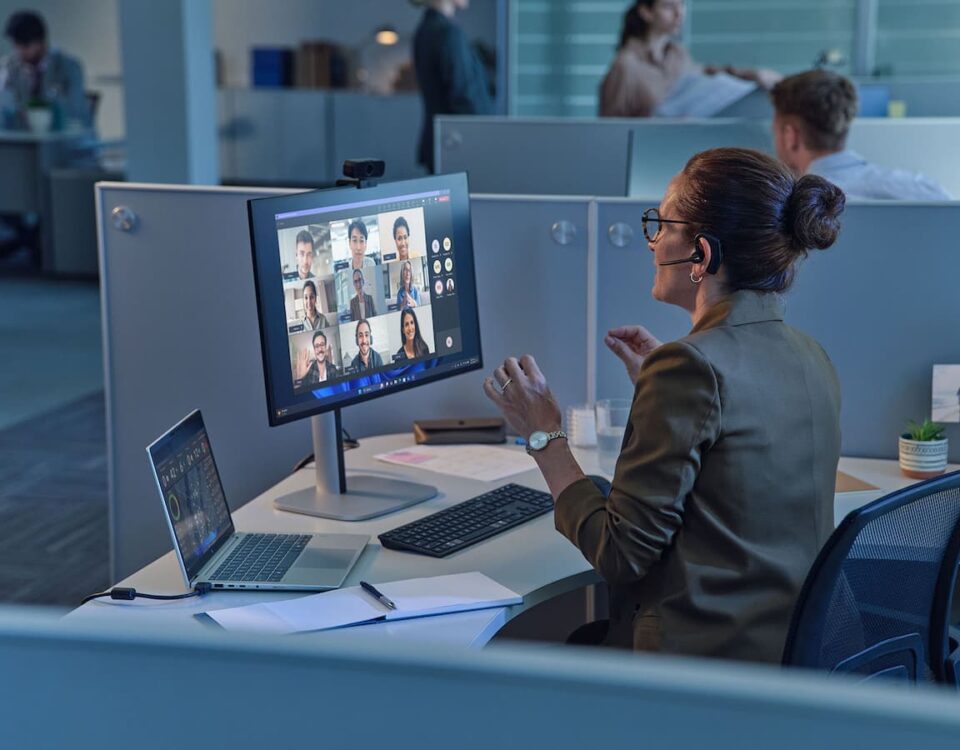Curb employee attrition with a Remote Work Revolution
A disturbing trend has been uncovered in research from employee engagement provider Culture Amp – 20% of UK workers are at high risk of leaving their jobs in 2024, with a further 12% aiming to leave before 2026.
This data was collected from 9 million responses made by employees across 1000 UK companies. However, the statistic doesn’t seem to be UK-specific – in fact, 18% of workers in the USA, 19% of Australians, and 23% of German employees are also intending to move to pastures new sometime this year.

When asked for reasons that would encourage employees to stay in their current position, the most common responses were, interestingly, communication-based - with the top three being ‘feeling more informed about internal developments’, ‘seeing how work is making a positive impact’, and ‘higher levels of collaboration’.
This should come as no surprise to companies who have struggled to effectively incorporate hybrid working – but unfortunately, fixing shortfalls like this isn’t as simple as mandating an increase in emails. If you intend to retain valuable talent, communication & collaboration must maintain a standard beyond the four walls of the office – since, according to the CIPD, properly supported flexible working has been shown to reduce staff turnover by up to 87%.
What does supporting flexible working look like?
Ultimately, boosting communication and collaboration for your hybrid workforce isn’t going to be achieved with a one-size-fits-all solution – so the following should be taken as a list of possible avenues to explore, rather than a shopping list.
- Quality Communication
- Pre-Configured IT
- Fast Support
- Updating Database
- Continuous Collaboration
- Hybrid Protection
If employees are going to be effective from home, you can’t expect them to struggle to communicate during video calls with your office teams.
Remove the barrier of substandard visual and audio with a Meeting Room Equipment service, which can be scaled to your available space to ensure you’re only paying for what you need – while also ensuring that your remote workers feel heard and valued.

According to recent research, substandard IT is one of the top reasons leading to staff feeling frustrated, isolated, and unable to do their job.
During 2020, The Sedbury Trust were able to provide top-quality IT devices to schoolchildren with the help of a DaaS service, which delivered laptops that were pre-configured with custom software – saving them the trouble of a lengthy setup process for each device.

IT support is an enduring challenge when managing a hybrid workforce – especially in terms of cost-efficiency.
Stonewall created many cost efficiencies by engaging with Managed IT Services, which boosts the capability of their internal IT team – with the cost of ongoing IT support covered as part of their monthly subscription fee.

Remote collaboration is much harder for employees when shared servers are cluttered and disorganised.
Employees of Mexichem can easily locate specific documents from their shared server with the help of an Information Management system, which correctly files data for accounting & invoicing, production recipe cards, and personnel records while requiring minimal resource from employees.

The more dispersed your workforce is, the harder it is to maintain continuity of communication.
Travis Perkins moved their internal servers to a secure Cloud solution, which includes functions that digitise files, automate certain analogue processes, and allow more consistent continuity of communication between remote employees.

The prominence of ‘smart’ devices at home has made remote working more dangerous than ever.
While flexible working presents many difficulties where cyber security is concerned, a Cyber Security Service provides you with an action plan to identify and plug gaps in your defences – meaning you and your people can continue to reap the benefits of hybrid work, but without compromising on safety.

As you can see, there are many ways to make flexible working easy for your employees – and as well as encouraging staff retention, doing so actually opens the door to many other efficiencies for your business.
If you want to support flexible working for your business but would like guidance of where to get started, fill out the contact form below.












































